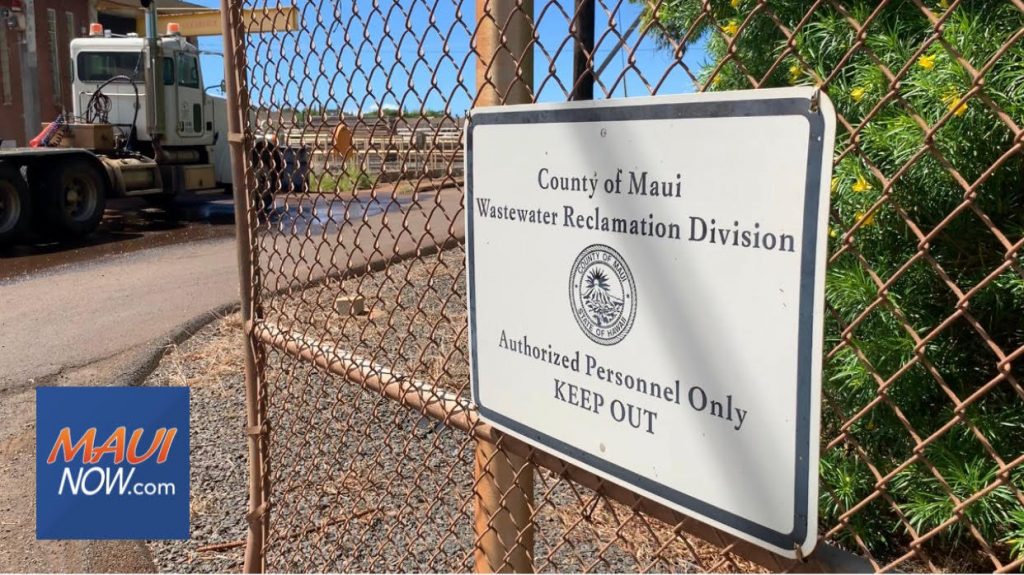Lahaina Injection Well Case Impacts Explored

Lahaina Wastewater Reclamation Facility. (Aug. 2019) Photo: Wendy Osher.
The U.S. Environmental Protection Agency has contacted the County of Maui to address the impact of the 9th Circuit Court ruling in the Lahaina injection well case.
The email communication addresses the impact of the expansion of the federal Clean Water Act on Maui County and possibly on “commonplace and ubiquitous activities such as backyard septic systems.”
The communication was received Wednesday afternoon from Anna Wildeman, principal deputy assistant administrator in the EPA’s Office of Water.
It states that the County of Maui is subject to the 2018 ruling by the 9th Circuit Court of Appeals, and “therefore discharges of pollutants to groundwater that ultimately reach jurisdictional surface waters are ‘fairly traceable’ back to a point source and more than de minimis are currently subject to the (National Pollutant Discharge Elimination System) permit program.”
“If the Ninth Circuit’s decision is upheld by the U.S. Supreme Court, all releases of pollutants from a point source to groundwater that ultimately reach a surface water could be subject to the NPDES permit program,” Wildeman stated. “This expansion of the Act’s coverage could require NPDES permits for commonplace and ubiquitous activities such as releases from homeowners’ backyard septic systems that find their way to jurisdictional surface waters through groundwater.
“These activities would therefore fall within EPA’s state program oversight responsibilities and could subject unpermitted discharges to state or federal enforcement or citizen suit liability under the Clean Water Act,” she wrote in an email to Deputy Corporation Counsel Richelle Thomson.
County officials say Wildeman also told Thomson that the EPA has concluded that the Clean Water Act “is best read as excluding all releases of pollutants from a point source to groundwater from NPDES coverage, regardless of a hydrologic connection between the groundwater and jurisdictional surface water.”
Department of Environmental Management Director Eric Nakagawa said:
“This EPA communication is significant because if affirms that the EPA agrees with our position that the Clean Water Act permit is not an appropriate regulatory tool for non-source point discharges, such as those from the Lahaina injection wells, and that the 9th Circuit ruling expands the act and could include ‘commonplace and ubiquitous’ discharges, such as backyard septic systems. Maui County could be forced to abandon its longstanding green recycled water program and resort to offshore sewage outfalls, estimated to cost from $130 million to $150 million. People with cesspools, septic systems and other wastewater disposal systems could face fines or liability. Non-sewered areas including shoreline condominiums, Maui Meadows and Hāna residents may face similar liability.”
Mayor Michael Victorino said his administration’s goal is to recycle 100 percent of wastewater and not use injection wells. “However, that is not possible at this time,” he said. “We are moving in that direction, but it’s going to take time and money.”
Maui County has also received a copy of testimony in support of maintaining its appeal to the U.S. Supreme Court from California Association of Sanitation Agencies.
For more information, see “FAQs about Maui County’s injection well appeal to the U.S. Supreme Court” available for viewing on the County of Maui website.









